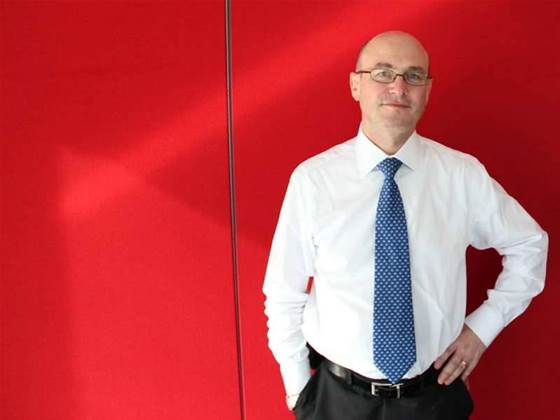Westpac’s technology department has undergone a dramatic shift in the five years since chief executive officer Gail Kelly took the reins in 2008.

The IT department, once described as a “dysfunctional poor cousin” to the rest of the business, now plays a key role in Westpac’s five-year Strategic Investment Priorities (SIP) program.
The $2 billion program has seen Westpac move to consolidate some nine data centres into two, as well as improving front-end banking systems such as teller, mobile apps and its contact centre.
According to chief information officer Clive Whincup, the program has also delivered the realisation that IT is a board-level subject and has to be treated as such.
“Tech is not being treated as a separate stream [within] our five year program,,” Whincup told iTnews in advance of his CIO Strategy Summit presentation, titled ‘The new IT paradigm: we are the business’.
“Tech underpins everything we are doing at Westpac. It underpins all the themes of the refresh as part of an overarching strategy.”
“It was a sea change for us when Gail Kelly came on board,” he said, describing IT as no longer something that enabled business strategy, but the bedrock.
“One of the first tasks was to establish an integrated technology and business strategy. At the board level, it was realised, there had to be a recognition technology is as important as any other strategic issue and needed to be treated as such.”
Leading outsourced IT
Westpac has overhauled its IT outsourcing relationships under the leadership of Kelly, Whincup and his predecessor Bob McKinnon, spending some $500 million in the four years to 2011 to mend its relationship with long-time partner IBM and establish a “best sourcing” supplier program.
The “best sourcing” program was unveiled in 2011 and aimed to cut down its number of large, lengthy outsourcing deals with major suppliers in favour of outsourcing key projects to specific players in three-to-four-year agreements.
In early 2012, Westpac restructured its technology engineering team, bringing responsibilities of its former head of engineering and general manager of engineering under the remit of newly appointed chief technology officer Jeff Jacobs.
But according to Whincup, the role of technology remains unchanged, regardless of the mix of outsourcing versus in-house.
“It’s a different skill set and skills combination for organisations making use of external resources, [but] that is not necessarily a change in the actual role of technology within the organisation,” he said.
“It’s simply a different operating model, and the internal staff will have a different range compared to those of an organisation that do a lot internally.”
Even in the face of cloud computing – which has enabled some business heads to take control of some IT spending without the involvement of IT – Whincup expected his role within Westpac to remain unchallenged.
From Whincup’s perspective, it’s not who signs the cheques, but what is done with the money in terms of tech spend and tech strategy that defines IT leadership. All of Westpac’s strategic IT decisions come through him, and his IT organisation pays all the IT-related bills and undertakes all execution of technology strategy.
“Yes, there are US trends where the CMO and the CIO are indistinguishable,” he noted. “But the key part of it is that technology is strategic, and the agenda is unified.”
The technical CIO
Because technology has become a board issue, however, Whincup noted that a CIO’s need for deep technical knowledge was diminishing in favour of leadership skills and strategic vision.
“I have a technical background,” he said. “And also the organisation is full of extremely bright technologists. However that team also needs leadership and strategic direction, and that is where the CIO comes into the game.”
One of the core challenges for a chief information officer is simply staying abreast of industry trends and technology directions. In other words, it’s hard to steer the ship if you don’t know where you’re going, and can’t effectively navigate there.
Whincup said he had a broad range of information sources to help him keep on top of technology trends, highlighting suppliers, consultants and staff.
CIO’s should be “tapping into as many sources as you can,” he said.
Hear Clive Whincup speak at the upcoming CIO Strategy Summit in Melbourne on February 26-28.


_(20).jpg&h=140&w=231&c=1&s=0)


.png&h=140&w=231&c=1&s=0)



_(26).jpg&w=100&c=1&s=0)

 iTnews Executive Retreat - Security Leaders Edition
iTnews Executive Retreat - Security Leaders Edition












_(1).jpg&h=140&w=231&c=1&s=0)



